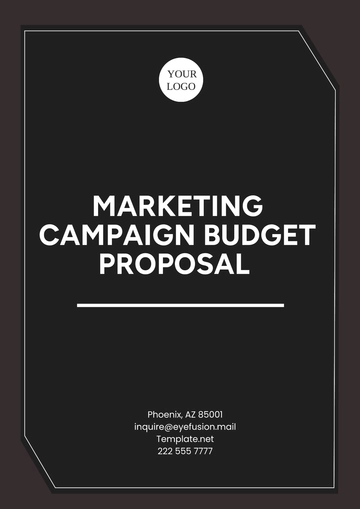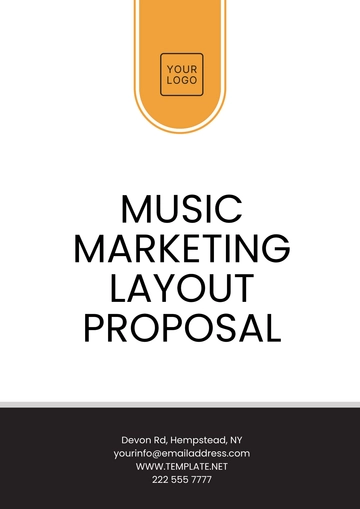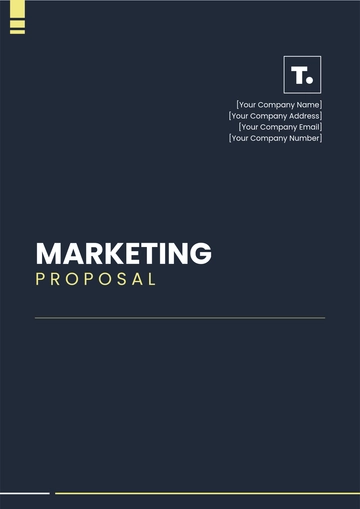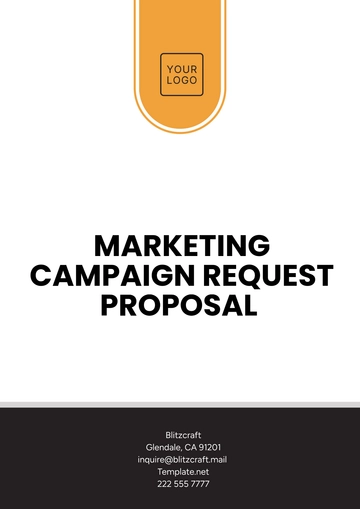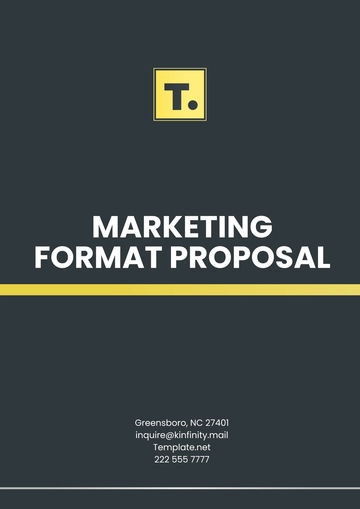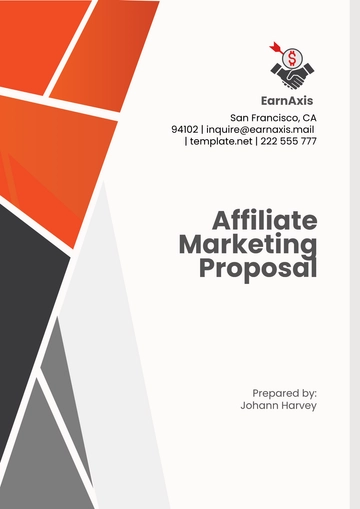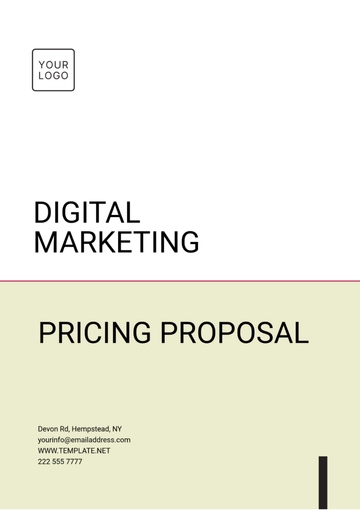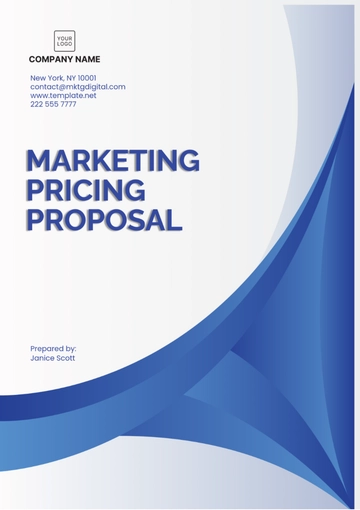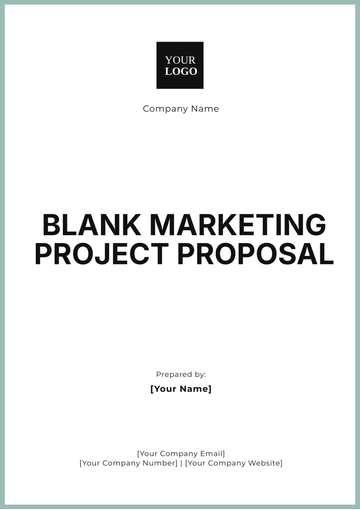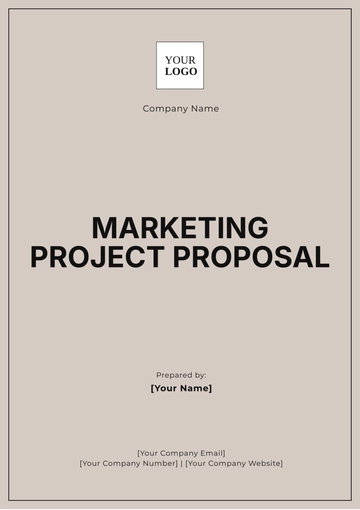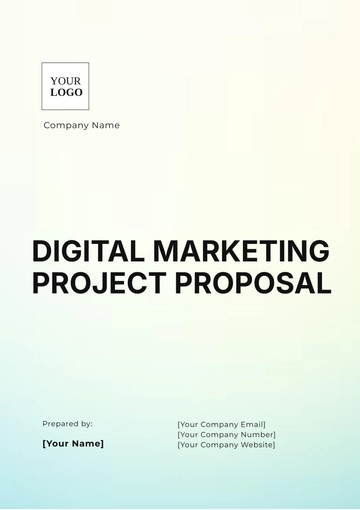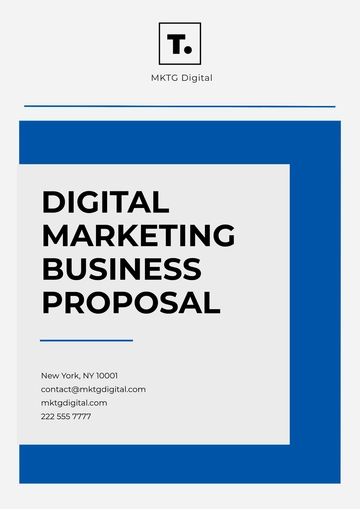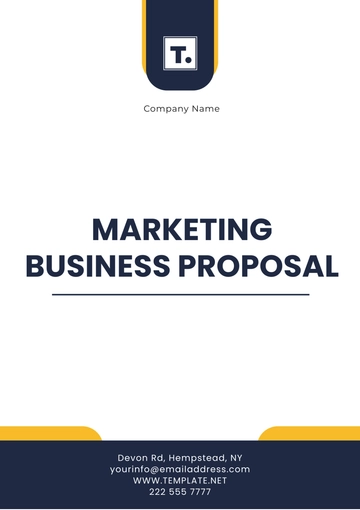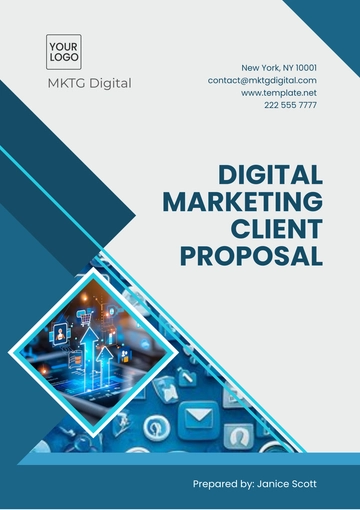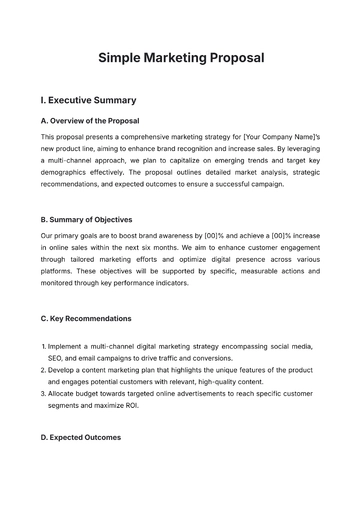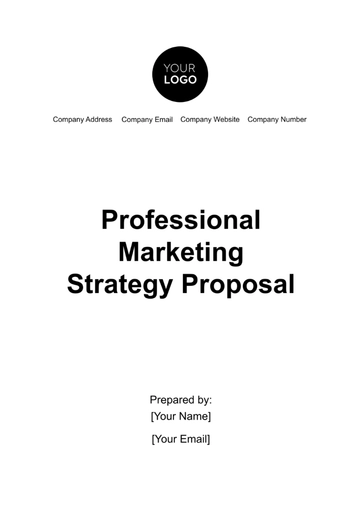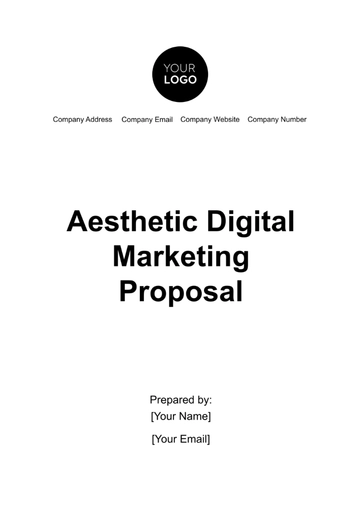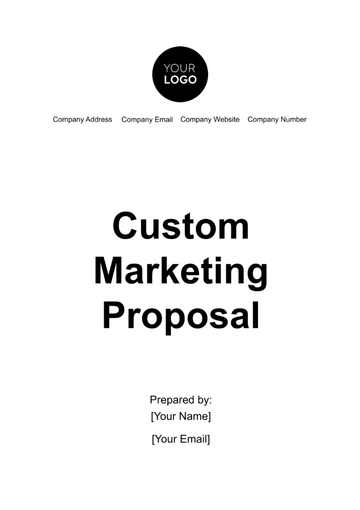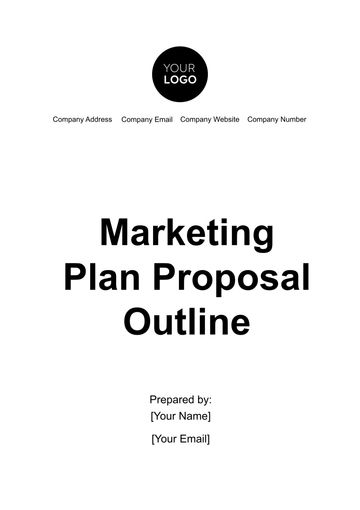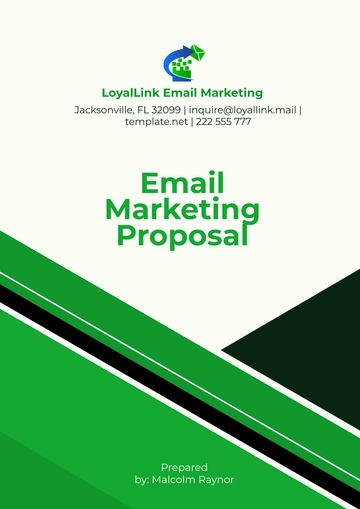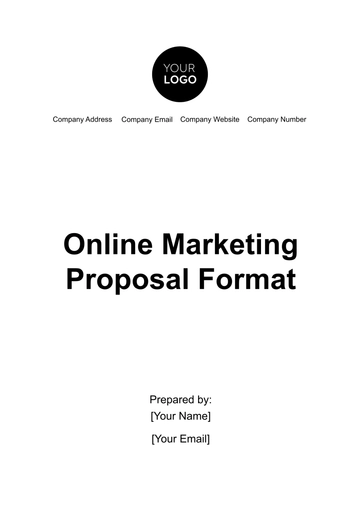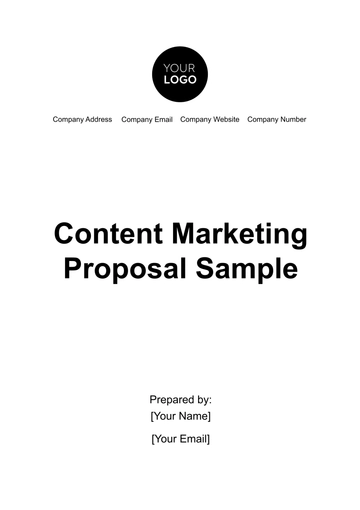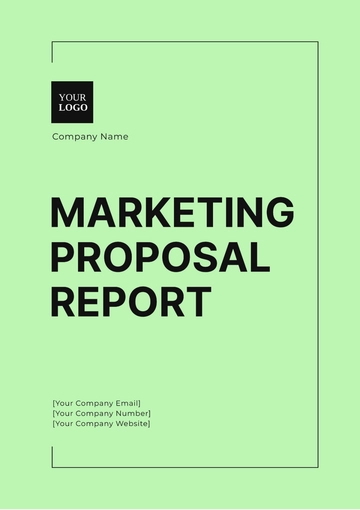Free Integrated Marketing Communications Advertising Proposal
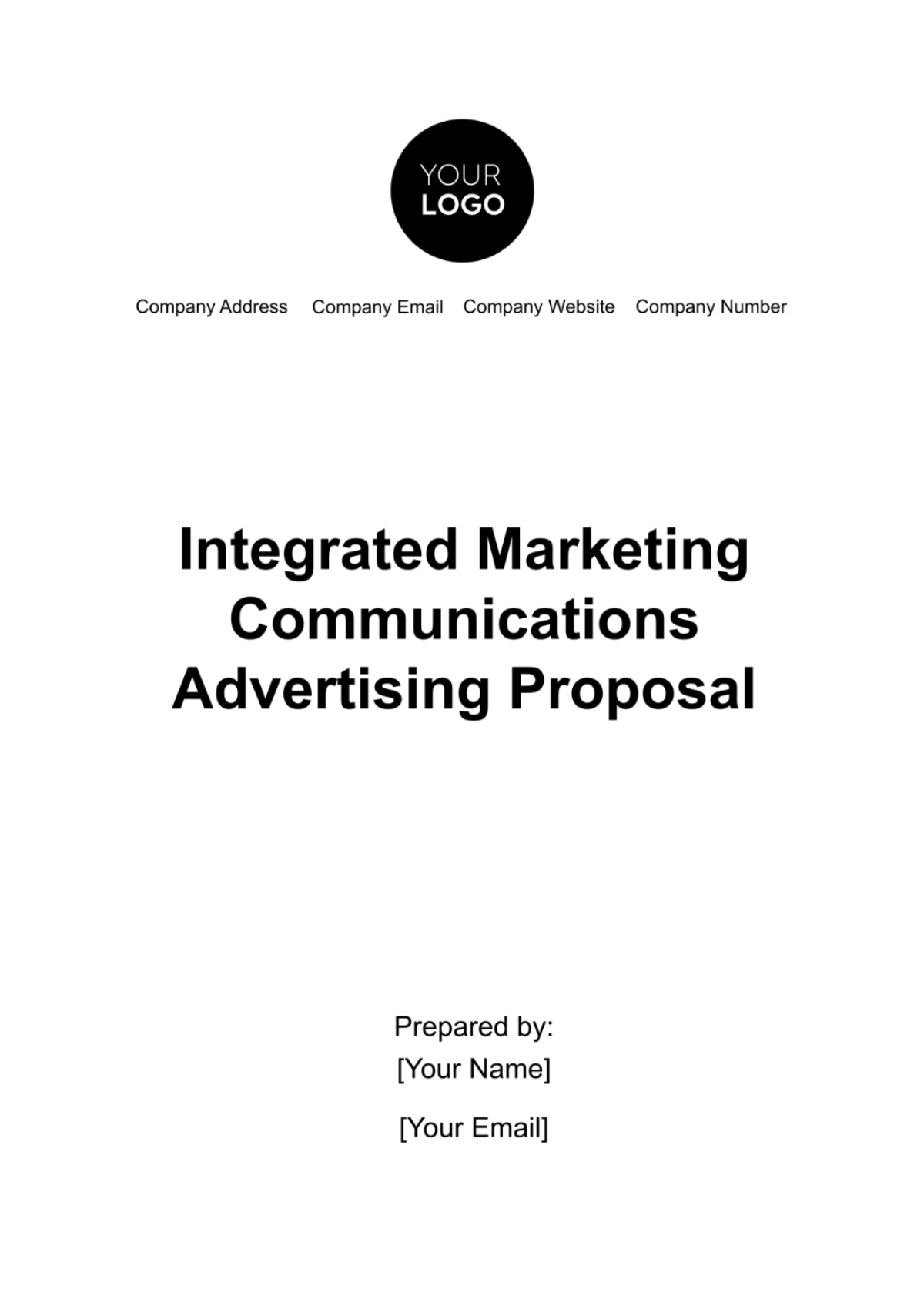
Executive Summary
In response to the evolving market landscape and [Company Name]'s growth ambitions, this Integrated Marketing Communications (IMC) Advertising Proposal outlines a comprehensive strategy designed to enhance brand visibility, engage target audiences, and drive business results. The proposed approach integrates traditional and digital channels, ensuring a cohesive and impactful marketing campaign.
Situation Analysis
Market Overview
The year 2056 is marked by a dynamic interplay of cutting-edge technological advancements and a transformative shift in consumer behaviors. [Company Name] finds itself at a crucial juncture where embracing these changes is imperative to sustain a competitive edge. Understanding the pulse of this evolving market is fundamental to the success of any advertising strategy. The analysis delves into the intricacies of emerging industry trends, competitor maneuvers, and insightful consumer behaviors, providing a comprehensive foundation for the development of targeted and effective advertising initiatives.
SWOT Analysis
A detailed examination of [Company Name]'s strengths, weaknesses, opportunities, and threats provides a foundation for crafting a strategy that maximizes strengths, addresses weaknesses, capitalizes on opportunities, and mitigates threats.
STRENGTHS | WEAKNESSES |
|
|
OPPORTUNITIES | THREATS |
|
|
[Company Name] boasts an established brand with an innovative product range, a robust distribution network, and a loyal customer base. However, challenges include limited online visibility, dependence on a single supplier, higher product costs, and a modest international presence. Opportunities lie in expanding into emerging markets, forming strategic partnerships, and meeting the rising demand for sustainable products. Yet, threats arise from intense competition, economic fluctuations, technological obsolescence, and potential disruptions in the supply chain. Navigating these dynamics will be crucial for [Company Name]'s advertising strategy to fortify its market position and adapt to the evolving landscape.
Marketing Objectives
A. Brand Awareness
Increase [Company Name]'s brand awareness by 25% within the next six months through strategic advertising efforts.
B. Customer Acquisition
Generate a 15% increase in customer acquisition through targeted campaigns promoting [Company Name]'s unique value propositions.
C. Revenue Growth
Achieve a 20% growth in revenue through the implementation of effective advertising strategies that drive sales.
Target Audience
Understanding the intricacies of the target audience is paramount for crafting a resonant and impactful advertising campaign. In the year 2056, [Company Name] aims to connect with a diverse audience, comprising both primary and secondary segments, each with unique characteristics and preferences.
Primary Target Audience: Tech Innovators
The primary target audience for [Company Name] consists of tech innovators, aged 25 to 40, at the forefront of technological advancements. This group is characterized by a high level of education, a penchant for cutting-edge gadgets, and a strong affinity for innovation. Psychographically, they seek products and services that align with their forward-thinking mindset and value efficiency and convenience.
Secondary Target Audience: Eco-Conscious Millennials
The secondary target audience focuses on eco-conscious millennials, aged 20 to 35, who prioritize sustainability and environmental responsibility. This segment values companies that demonstrate a commitment to eco-friendly practices. Their preferences include ethically sourced products, minimal environmental impact, and brands that actively contribute to social and environmental causes.
 Messaging Strategy
Messaging Strategy
Tailoring advertising messages to resonate with each audience segment is critical. For tech innovators, emphasizing product innovation, efficiency, and cutting-edge design will be key. Meanwhile, messages targeting eco-conscious millennials should highlight [Company Name]'s commitment to sustainability, ethical practices, and its positive impact on the environment.
Creative Strategy
In crafting [Client's Company Name]'s creative strategy, our primary goal is to create an immersive brand experience that seamlessly aligns with the company's established identity while deeply resonating with the identified target audience. This strategy encompasses the development of impactful key messaging, visually captivating content, and a distinct Unique Selling Proposition (USP) that not only distinguishes [Client's Company Name] in the market but also cultivates a lasting connection with consumers.
Key Messaging
Our key messaging revolves around capturing the essence of [Company Name] – its values, mission, and the unique value it brings to its customers. By carefully articulating a narrative that combines authenticity with innovation, we aim to evoke an emotional response from the audience. This messaging will be consistently woven into all advertising materials, reinforcing the core brand message and establishing a memorable brand presence in the minds of consumers.
Visual Elements
Visual appeal is a pivotal component of our creative strategy. Through an aesthetically pleasing and cohesive design language, we intend to captivate the audience's attention and leave a lasting impression. The visual elements will be carefully curated to reflect [Company Name]'s brand personality, ensuring a harmonious blend of creativity and brand consistency across all touchpoints. This includes striking imagery, engaging graphics, and a consistent color palette that reinforces brand recognition.
Unique Selling Proposition (USP)
To set [Company Name] apart in the market, we will articulate a compelling Unique Selling Proposition that highlights the brand's distinctive advantages and positions it as the optimal choice for the target audience. This will be communicated clearly and consistently across various advertising channels, emphasizing the aspects of [Company Name] that resonate most with the target audience's needs and aspirations.
Multichannel Integration
The creative strategy extends seamlessly across both traditional and digital channels, ensuring a unified brand message. From captivating television commercials and print advertisements to engaging social media content and interactive online campaigns, the creative elements will be adapted to suit the unique characteristics of each channel. This approach not only maximizes reach but also ensures a cohesive brand experience, reinforcing [Company Name]'s identity across diverse consumer touchpoints.
Emotional Connection
Recognizing the power of emotional connection in consumer decision-making, our creative strategy will incorporate elements that evoke positive emotions. By aligning the brand with relatable and aspirational themes, we aim to foster a deep connection between [Company Name] and its audience, transcending the transactional nature of consumer relationships.
Media Planning
In crafting an optimal media plan for [Client Company Name], we recognize the imperative to create a seamless and impactful presence across diverse platforms. Our strategy is meticulously designed to leverage a strategic blend of traditional and digital media channels, ensuring an expansive reach to the target audience. Each chosen channel plays a distinct role in maximizing visibility and engagement.
Television
Television remains a formidable medium for capturing the attention of a broad audience. Our television advertising strategy capitalizes on captivating visuals and storytelling to convey [Company Name]'s brand narrative. By strategically placing commercials during prime time slots and popular shows, we aim to establish a strong emotional connection with the audience, fostering brand recall and resonance.
Print media maintains its relevance in delivering tangible and authoritative content. Targeted print advertisements in leading publications within [industry] will enhance [Company Name]'s credibility and visibility among key stakeholders. The carefully curated content will emphasize [Company Name]'s unique value propositions and position it as an industry leader.
Social Media
In the digital age, social media is an indispensable tool for real-time engagement and community building. Our social media strategy focuses on platforms that align with [Company Name]'s target demographic. Engaging content, interactive campaigns, and influencer partnerships will drive brand awareness, encourage user-generated content, and establish [Company Name] as a dynamic and relatable brand within the digital landscape.
Online Advertising
The online sphere offers diverse advertising opportunities, from display ads to search engine marketing. Our online advertising strategy encompasses targeted campaigns on industry-relevant websites and search engines, ensuring that [Company Name] is visible to potential customers actively seeking related products or services. This approach maximizes the impact of digital touchpoints in the customer journey.
Budget Allocation
The success of any advertising campaign hinges on a well-thought-out and effectively allocated budget. Our comprehensive budget allocation plan ensures that financial resources are strategically distributed across key components of the proposed advertising campaign. The following pie chart illustrates the estimated budget breakdown:
Creative Development (35%)
The creative elements of the campaign are paramount in capturing the attention of our target audience. This includes the conceptualization, design, and production of compelling visuals and messaging that align with [Company Name]'s brand identity. The allocated 35% of the budget to creative development ensures the highest quality and impact.
Media Placement (25%)
Effectively reaching our target audience requires strategic media placement. This includes expenses related to securing advertising space on television, print, online platforms, and social media channels. With 25% of the budget dedicated to media placement, we ensure a well-rounded and pervasive presence across diverse channels.
Production (20%)
Production costs encompass the actualization of creative materials, from video and audio production to graphic design. Allocating 20% of the budget to production ensures the seamless execution of our creative vision and the delivery of high-quality content across various media.
Digital Advertising (15%)
In the dynamic landscape of 2056, digital advertising plays a pivotal role in engaging tech-savvy audiences. This segment of the budget is allocated to online advertising campaigns, including pay-per-click (PPC), social media advertising, and other digital platforms. The 15% allocation reflects our commitment to leveraging the power of digital channels.
Miscellaneous Expenses (5%)
To account for unforeseen expenses and miscellaneous costs associated with the campaign, we allocate 5% of the budget. This flexibility ensures that we can adapt to changing circumstances and seize emerging opportunities without compromising the overall effectiveness of the campaign.
Total Budget: [$0,000,000]
This comprehensive budget allocation plan provides a transparent and strategic overview of the financial resources required for the proposed advertising campaign. It reflects our commitment to optimizing spending for maximum impact and achieving the outlined marketing objectives.
Evaluation and Measurement
In [Year], precision in evaluating the impact of advertising campaigns is paramount. This section meticulously defines Key Performance Indicators (KPIs) and measurement metrics, forming the backbone of our assessment strategy to gauge the success and effectiveness of [Company Name]'s advertising endeavors.
Key Performance Indicators (KPIs)
To quantify the impact and relevance of our advertising initiatives, we propose a set of KPIs that align with [Company Name]'s overarching objectives:
Brand Awareness Index: Measure the uplift in brand recognition through pre- and post-campaign surveys, social media analytics, and website traffic analysis.
Customer Engagement Rate: Evaluate the level of interaction with our content across various channels, including social media platforms, website engagement, and customer feedback.
Measurement Metrics and Tools
Our approach to evaluation incorporates cutting-edge tools and methodologies to provide real-time insights and foster continuous optimization:
Social Media Analytics: Utilize advanced analytics tools to measure social media engagement, sentiment analysis, and audience demographics, offering a comprehensive understanding of our online presence.
Web Analytics: Implement robust web analytics tools to monitor website traffic, user behavior, and conversion paths, enabling us to fine-tune our digital strategies based on user interactions.
Timeline
The timeline is a meticulously crafted roadmap that delineates the various stages of our advertising campaign, ensuring a seamless and coordinated execution. Each milestone is strategically positioned to optimize the impact of our efforts, from the initial spark of creative development to the post-campaign analysis that will illuminate the campaign's effectiveness.
Creative Development (Weeks 1-4)
The creative development phase marks the genesis of our campaign. Our team of seasoned creatives will immerse themselves in [Company Name]'s brand ethos, market positioning, and target audience insights. This phase will span four weeks, allowing for ideation, conceptualization, and refinement of compelling visuals and messaging that encapsulate the essence of [Company Name].
Production and Preparations (Weeks 5-8)
Following the approval of the creative concepts, the production and preparations phase swings into action. From visual assets to multimedia content, this period encompasses the meticulous execution of our creative vision. Simultaneously, logistical preparations for various channels, such as print, television, and online media, will be initiated to ensure a flawless campaign launch.
Campaign Launch (Week 9)
The campaign launch marks the crescendo of our efforts. A synchronized release across chosen channels will maximize reach and impact. Social media teasers, print advertisements, and strategically timed television spots will converge to create a memorable launch moment, capturing the attention of our target audience and igniting curiosity.
Ongoing Optimization (Weeks 10-12)
Post-launch, our focus shifts to real-time optimization. Continuous monitoring of campaign performance, audience engagement, and market feedback will guide agile adjustments to ensure maximum resonance. This phase is dynamic, allowing us to capitalize on emerging trends and promptly address any unforeseen challenges.
Post-Campaign Analysis (Weeks 13-14)
As the campaign winds down, our attention turns to a comprehensive post-campaign analysis. Key performance indicators (KPIs) will be rigorously evaluated against predetermined benchmarks. Qualitative and quantitative data will be synthesized to derive actionable insights, providing a foundation for future campaigns and strategic decision-making.
Reporting and Recommendations (Week 15)
The culmination of our efforts involves the preparation of a detailed report. This comprehensive document will not only showcase the campaign's quantitative success but also provide qualitative insights. Additionally, it will offer strategic recommendations for future marketing endeavors, leveraging the lessons learned during the campaign's execution.
Conclusion
This Integrated Marketing Communications Advertising Proposal presents a holistic strategy to elevate [Company Name]'s brand presence, engage target audiences, and drive business growth. The proposed initiatives are tailored to the unique needs of [Company Name], ensuring a cohesive and impactful marketing campaign in 2056.
- 100% Customizable, free editor
- Access 1 Million+ Templates, photo’s & graphics
- Download or share as a template
- Click and replace photos, graphics, text, backgrounds
- Resize, crop, AI write & more
- Access advanced editor
Elevate your marketing strategy with Template.net's Integrated Marketing Communications Advertising Proposal Template. This editable and customizable tool streamlines proposal creation. Seamlessly editable in our AI Editor Tool, it empowers you to craft comprehensive proposals tailored to your brand's needs, ensuring coherence and effectiveness across all communication channels.
You may also like
- Business Proposal
- Research Proposal
- Proposal Request
- Project Proposal
- Grant Proposal
- Photography Proposal
- Job Proposal
- Budget Proposal
- Marketing Proposal
- Branding Proposal
- Advertising Proposal
- Sales Proposal
- Startup Proposal
- Event Proposal
- Creative Proposal
- Restaurant Proposal
- Blank Proposal
- One Page Proposal
- Proposal Report
- IT Proposal
- Non Profit Proposal
- Training Proposal
- Construction Proposal
- School Proposal
- Cleaning Proposal
- Contract Proposal
- HR Proposal
- Travel Agency Proposal
- Small Business Proposal
- Investment Proposal
- Bid Proposal
- Retail Business Proposal
- Sponsorship Proposal
- Academic Proposal
- Partnership Proposal
- Work Proposal
- Agency Proposal
- University Proposal
- Accounting Proposal
- Real Estate Proposal
- Hotel Proposal
- Product Proposal
- Advertising Agency Proposal
- Development Proposal
- Loan Proposal
- Website Proposal
- Nursing Home Proposal
- Financial Proposal
- Salon Proposal
- Freelancer Proposal
- Funding Proposal
- Work from Home Proposal
- Company Proposal
- Consulting Proposal
- Educational Proposal
- Construction Bid Proposal
- Interior Design Proposal
- New Product Proposal
- Sports Proposal
- Corporate Proposal
- Food Proposal
- Property Proposal
- Maintenance Proposal
- Purchase Proposal
- Rental Proposal
- Recruitment Proposal
- Social Media Proposal
- Travel Proposal
- Trip Proposal
- Software Proposal
- Conference Proposal
- Graphic Design Proposal
- Law Firm Proposal
- Medical Proposal
- Music Proposal
- Pricing Proposal
- SEO Proposal
- Strategy Proposal
- Technical Proposal
- Coaching Proposal
- Ecommerce Proposal
- Fundraising Proposal
- Landscaping Proposal
- Charity Proposal
- Contractor Proposal
- Exhibition Proposal
- Art Proposal
- Mobile Proposal
- Equipment Proposal
- Student Proposal
- Engineering Proposal
- Business Proposal

